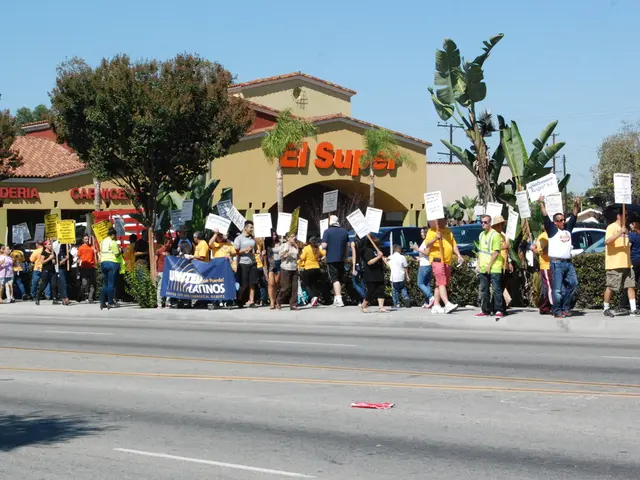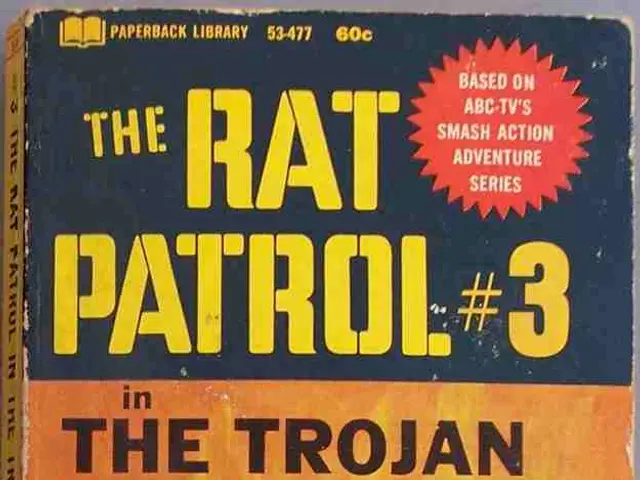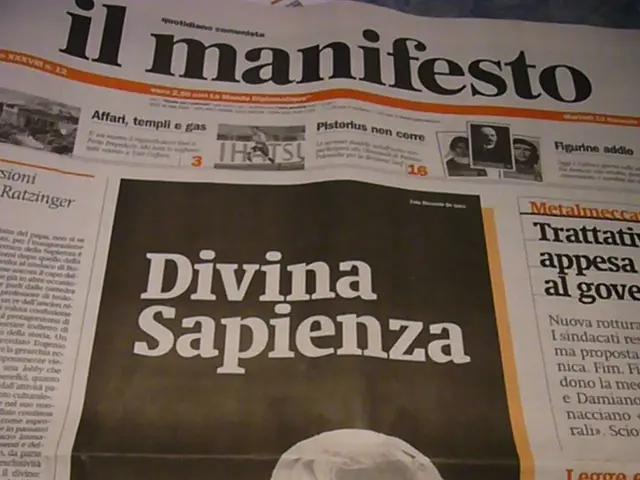Identifying AI-generated or deepfake political ads: a guide
In the digital age, the rise of deepfake technology has raised concerns about the authenticity of political advertising. Deepfakes are video or audio recordings created through artificial intelligence computer programs, capable of generating lifelike imitations of human faces, voices, and movements [1]. These manipulated media can sway voters in one direction or another by misleading the public and promoting false information.
To combat this growing threat, researchers are developing tools and methods for identifying deepfakes in political advertising. Here are some techniques and tools that can help spot AI-generated political propaganda:
## Techniques for Identifying Deepfakes
1. **Reverse Image Search**: Conduct a reverse image search on keyframes from a video to see if the same image appears in other contexts online. This can help identify if an image is being reused or manipulated [1].
2. **Metadata Examination**: Examine the video's metadata for inconsistencies such as missing timestamps or altered camera details, which can signal manipulation [1].
3. **Frame-by-Frame Analysis**: Slow down videos to reveal unnatural glitches, distorted facial features, or mismatched expressions, common indicators of deepfake content [1].
4. **Video Injection Detection**: Analyze pixel inconsistencies and motion patterns to detect AI-generated content inserted into real footage [1].
5. **Interference-Based Detection**: This method detects subtle frequency spectrum irregularities, which can indicate tampering even when creators try to conceal digital alterations [1].
6. **Contextual Analysis**: Consider the context, including the origin and potential reach of the content. This can help classify the risk associated with the deepfake [3].
## Tools for Detecting Deepfakes
1. **AI-Powered Detection Tools**: AI tools such as DuckDuckGoose, Reality Defender, and DeepTrace offer APIs that help detect deepfakes more effectively [1].
2. **Fact-Checking Tools and Plugins**: Tools like Logically can flag viral videos as deepfakes, although they may not catch all sophisticated fakes [2].
3. **Collaborative Efforts**: Platforms and governments are working together to flag and remove deepfake content, such as the EU's Digital Services Act requiring labels for synthetic content [2][3].
## Challenges and Considerations
While technical tools are essential for detecting deepfakes, understanding the context and potential impact of the content is crucial for addressing the broader risks associated with AI-generated political propaganda. Even advanced tools can be fooled by highly sophisticated deepfakes or adversarial attacks, which are designed to bypass filters [2]. Deepfakes targeting specific demographics can be particularly effective, emphasizing the need for contextual understanding and risk classification [4]. Regulatory frameworks, such as the EU's Digital Services Act, can help in managing and mitigating the impact of deepfakes [3].
In politics, deepfake videos often attempt to trick the viewer into believing a political figure said or did something they didn't. By staying vigilant and employing these techniques and tools, we can help protect the integrity of political advertising and maintain the trust of the voting public.
- The rise of deepfake technology in social media has become a concern for politicians, as manipulated media can lead to disinformation and impact voters' decisions.
- Using education-and-self-development services, individuals can learn about detection techniques for deepfakes in political ads, such as reverse image search, metadata examination, frame-by-frame analysis, video injection detection, interference-based detection, and contextual analysis.
- Considering the policy-and-legislation initiatives in place, like the EU's Digital Services Act, can help in identifying and managing the impact of deepfakes on politics.
- These sophisticated AI-generated videos, aiming to damage politicians' reputations, underscore the importance of services offering AI-powered detection tools, like DuckDuckGoose, Reality Defender, and DeepTrace.
- General-news and entertainment media should also be vigilant in verifying information before sharing it on social media, as nefarious actors may use these platforms for spreading political disinformation.
- To minimize the threats posed by deepfakes, it is essential to combine technical detection approaches with contextual understanding and a thorough assessment of the potential risks associated with the content.







